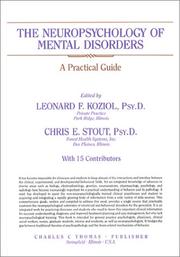How Long to Read ADHD as a Model of Brain-Behavior Relationships
By Leonard F. Koziol
How Long Does it Take to Read ADHD as a Model of Brain-Behavior Relationships?
It takes the average reader 1 hour and 34 minutes to read ADHD as a Model of Brain-Behavior Relationships by Leonard F. Koziol
Assuming a reading speed of 250 words per minute. Learn more
Description
ADHD as a Model of Brain-Behavior Relationships Leonard F. Koziol, Deborah Ely Budding, and Dana Chidekel Series Title: Springer Briefs in Neuroscience Subseries: The Vertically Organized Brain in Theory and Practice It's been a basic neurological given: the brain does our thinking, and has evolved to do the thinking, as controlled by the neocortex. In this schema, all dysfunction can be traced to problems in the brain’s lateral interactions. But in scientific reality, is this really true? Challenging this traditional cortico-centric view is a body of research emphasizing the role of the structures that control movement-the brain's vertical organization-in behavioral symptoms. Using a well-known, widely studied disorder as a test case, ADHD as a Model of Brain-Behavior Relationships offers an innovative framework for integrating neuroscience and behavioral research to refine diagnostic process and advance the understanding of disorders. Identifying a profound disconnect between current neuropsychological testing and the way the brain actually functions, this revision of the paradigm critiques the DSM and ICD in terms of the connectedness of brain structures regarding cognition and behavior. The authors argue for a large-scale brain network approach to pathology instead of the localizing that is so common historically, and for an alternate set of diagnostic criteria proposed by the NIMH. Included in the coverage: The diagnosis of ADHD: history and context. ADHD and neuropsychological nomenclature Research Domain Criteria: a dimensional approach to evaluating disorder The development of motor skills, executive function, and a relation to ADHD The role of the cerebellum in cognition, emotion, motivation, and dysfunction How large-scale brain networks interact Heralding a more accurate future of assessment, diagnosis, and treatment of neurodevelopmental disorders, ADHD as a Model of Brain-Behavior Relationships represents a major step forward for neuropsychologists, child psychologists, and psychiatrists, or any related profession interested in a neuroscientific understanding of brain function.
How long is ADHD as a Model of Brain-Behavior Relationships?
ADHD as a Model of Brain-Behavior Relationships by Leonard F. Koziol is 93 pages long, and a total of 23,529 words.
This makes it 31% the length of the average book. It also has 29% more words than the average book.
How Long Does it Take to Read ADHD as a Model of Brain-Behavior Relationships Aloud?
The average oral reading speed is 183 words per minute. This means it takes 2 hours and 8 minutes to read ADHD as a Model of Brain-Behavior Relationships aloud.
What Reading Level is ADHD as a Model of Brain-Behavior Relationships?
ADHD as a Model of Brain-Behavior Relationships is suitable for students ages 10 and up.
Note that there may be other factors that effect this rating besides length that are not factored in on this page. This may include things like complex language or sensitive topics not suitable for students of certain ages.
When deciding what to show young students always use your best judgement and consult a professional.
Where Can I Buy ADHD as a Model of Brain-Behavior Relationships?
ADHD as a Model of Brain-Behavior Relationships by Leonard F. Koziol is sold by several retailers and bookshops. However, Read Time works with Amazon to provide an easier way to purchase books.
To buy ADHD as a Model of Brain-Behavior Relationships by Leonard F. Koziol on Amazon click the button below.
Buy ADHD as a Model of Brain-Behavior Relationships on Amazon